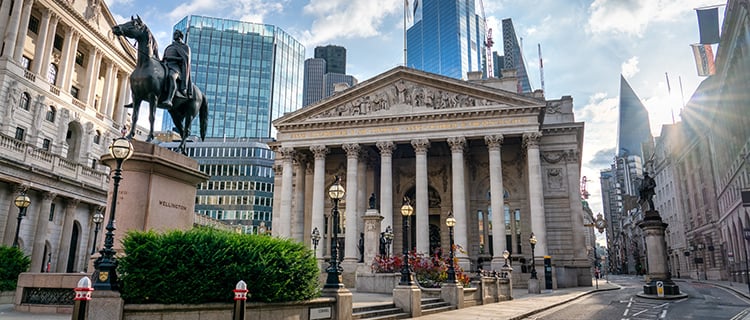Bank of England cuts rates again

The Bank of England Monetary Policy Committee (MPC) matched financial market expectations and cut the Bank Rate by 25 bps to 4.00% on Thursday. They cited “substantial disinflation” and a “subdued” economy in the accompanying statement. However, the vote was a narrow one, with five rate setters supporting a reduction, but four voting for no change. One rate setter who backed the 25 bps cut had wanted to see a 50 bps fall.
The large minority opposing a reduction suggests we could be looking at no change in the September MPC meeting. However, with the labour market slowing, our forecast is still for another 25 bps rate cut later this year. The Bank’s new forecasts are predicting GDP growth of 0.1% in Q2, rising slightly to 0.3% in Q3. This expectation that growth will hold up, albeit at a slow pace, may explain why four committee members were prepared to leave the Base Rate unchanged. At the press conference, Governor Andrew Bailey said he believed interest rates were still on a “downwards path”.
To some, a cut in the Bank Rate when inflation rose to 3.6% in June might seem surprising, given the inflation target is 2.0%. However, because the effects of a cut in interest rates tend to take 12-18 months to filter through to the economy, the MPC tends to base its decision on where it believes inflation will be further down the line. The latest forecasts from the Bank of England have inflation set to steadily return to target from Q4 2025 onwards, reaching 2.0% in 2027.
This rate reduction has come at a time when we view the property investment market as having reached a turning point. Based on the MSCI UK Monthly Index, the industrial market has seen capital values gradually rising for 15 months now, and parts of the retail market (particularly retail warehouses) have more recently shown signs of recovery. Office investment has been slower than the other main sectors to move into a recovery, but we believe that is now imminent, given occupier demand has held up better than many expected.
Turning to the housing market, Halifax released its house price index today, which showed the month-on-month growth rate increased in July to 0.4%, up from 0.1% in June. This suggests demand is gradually improving again, following the changes to Stamp Duty in April. Today’s Base Rate reduction should improve affordability, and support market confidence.
Were it not for the US tariffs controversy, and the associated financial markets volatility, we think the first half investment figures for all property sectors would have been stronger, but we also suspect demand has simply been placed on hold and will soon return. Consequently, we believe property investment sales volumes will be stronger in the second half of this year, as lower interest rates and the recent rally in the financial markets, persuade investors it is time to buy real estate when yields are still relatively high.
Undoubtedly there are still risks facing investors, but they tend to be macro-economic (such as anticipated tax rises in the autumn budget) and not imbalances within property markets, where pricing now looks competitive. So, we suspect investors with dry powder and long-term horizons could view short-term uncertainty surrounding the budget or geopolitical risks as presenting an opportunity to buy with few competing bidders.

